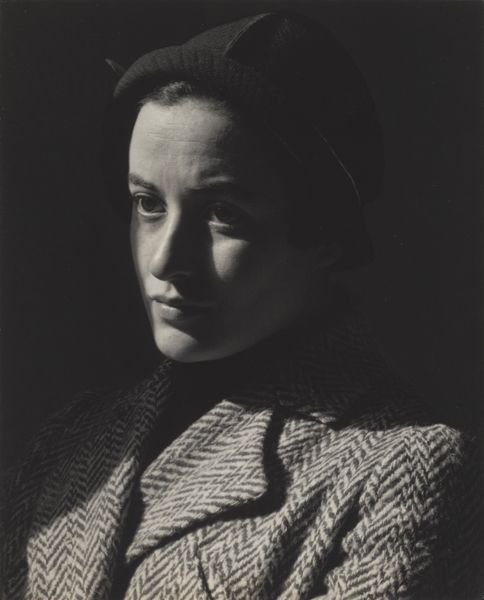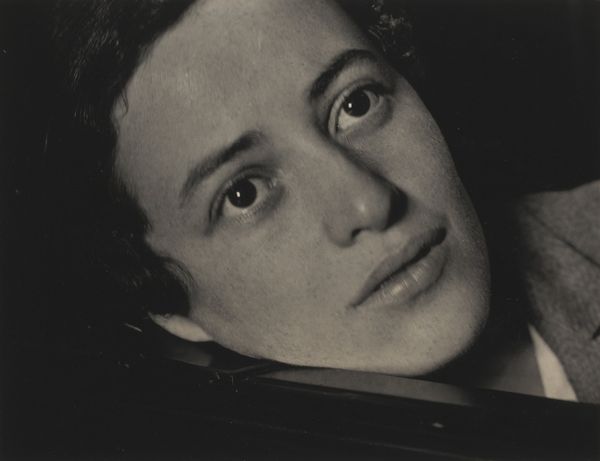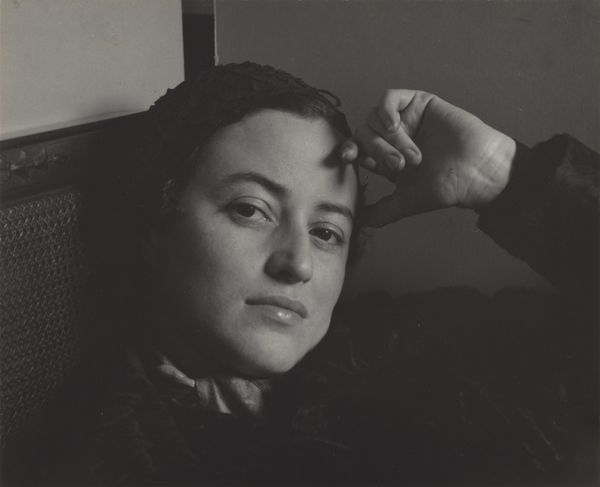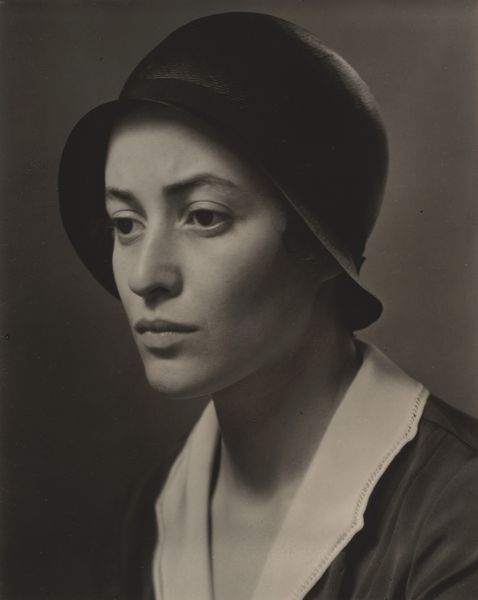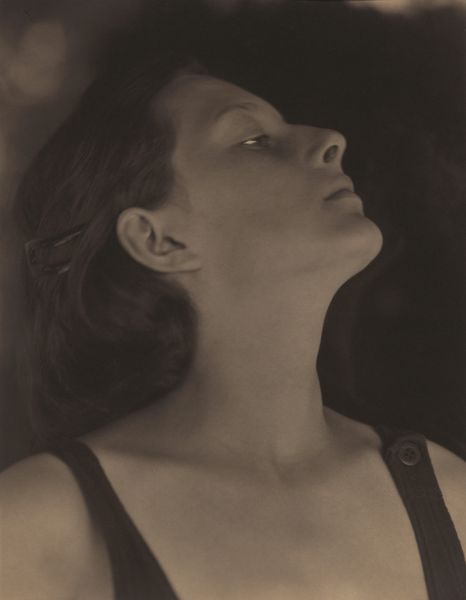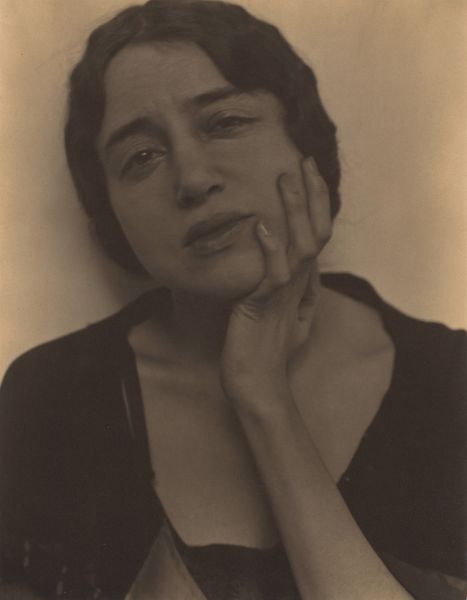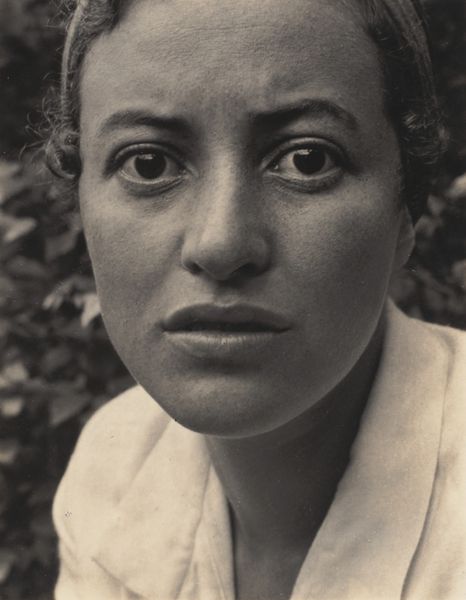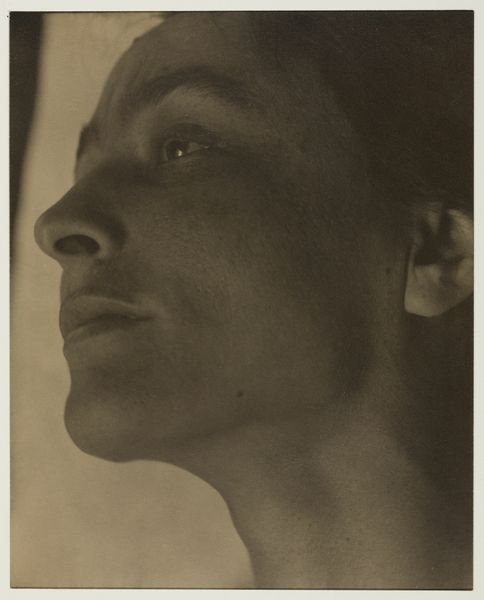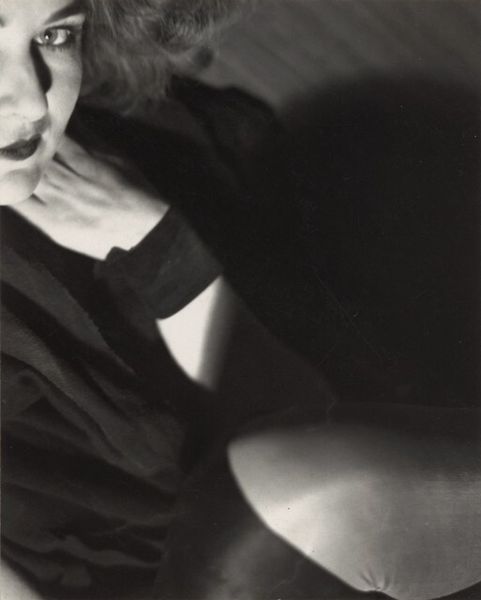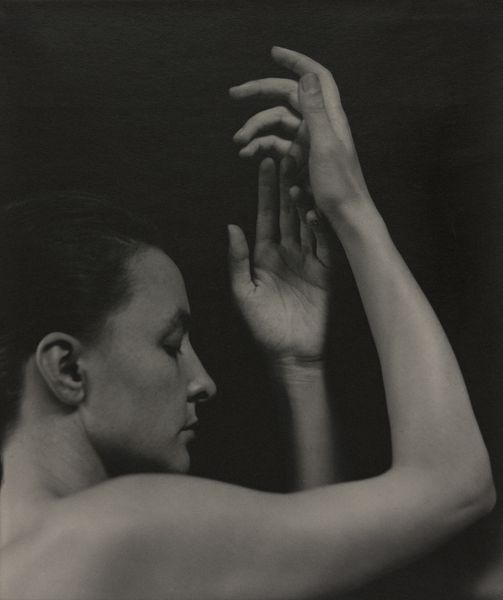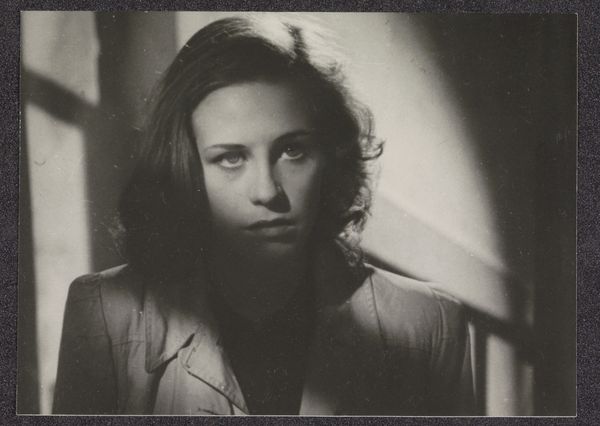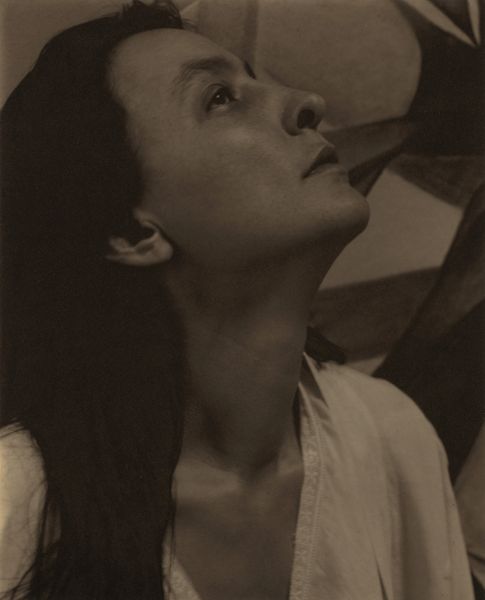
photography
#
portrait
#
self-portrait
#
low key portrait
#
pictorialism
#
photography
#
black and white
#
modernism
Dimensions: sheet (trimmed to image): 9.7 × 7.4 cm (3 13/16 × 2 15/16 in.) mount: 26.6 × 20.4 cm (10 1/2 × 8 1/16 in.)
Copyright: National Gallery of Art: CC0 1.0
Curator: Looking at Alfred Stieglitz’s 1931 photograph, simply titled "Dorothy Norman", I feel immediately drawn into her pensive mood. There's an almost palpable sense of introspection in this portrait. Editor: The high contrast in the work enhances that feeling. We are presented with this strong, linear gaze directed slightly off frame. Do you sense this contributes to a certain tension within the pictorial space? Curator: Absolutely, the gaze avoids direct engagement, suggesting internal reflection, but perhaps also a kind of cautiousness or uncertainty. And what do you make of the almost obsessive, but skillful deployment of light and shadow in shaping the contours of her face? Editor: Yes, notice how Stieglitz employs shadow to sculpt Norman’s features; there's a strong chiaroscuro effect. Pictorialism sought beauty through technical manipulation, after all, with lighting creating emotional impact. The almost exaggerated contrast might also symbolize the dichotomies Norman herself was exploring in her work—the political and the personal. Curator: That's a fantastic observation. Knowing that Norman was not only Stieglitz's muse but also a pioneering activist and intellectual certainly adds another layer of depth. I imagine this photograph acting as a meeting place. What I see are two titans whose work spoke powerfully of that time. Editor: The soft focus, too, creates an intimacy, an illusion of access to an internal space, inviting subjective interpretation and underscoring the symbolic import Stieglitz placed upon his photographic practice. Curator: Considering the turbulent times during which this portrait was created—the Great Depression looming—there's an intriguing blend of vulnerability and resilience. And somehow, despite all the layers, it makes me want to connect to my own vulnerable core, but in a way that is authentic to the self. Editor: An exercise in formalism reveals an interesting push and pull here. It also reminds us how photography, even within its modernist inclinations, never exists in a vacuum, how art often transcends mere aesthetics and intersects profoundly with lived experience.

